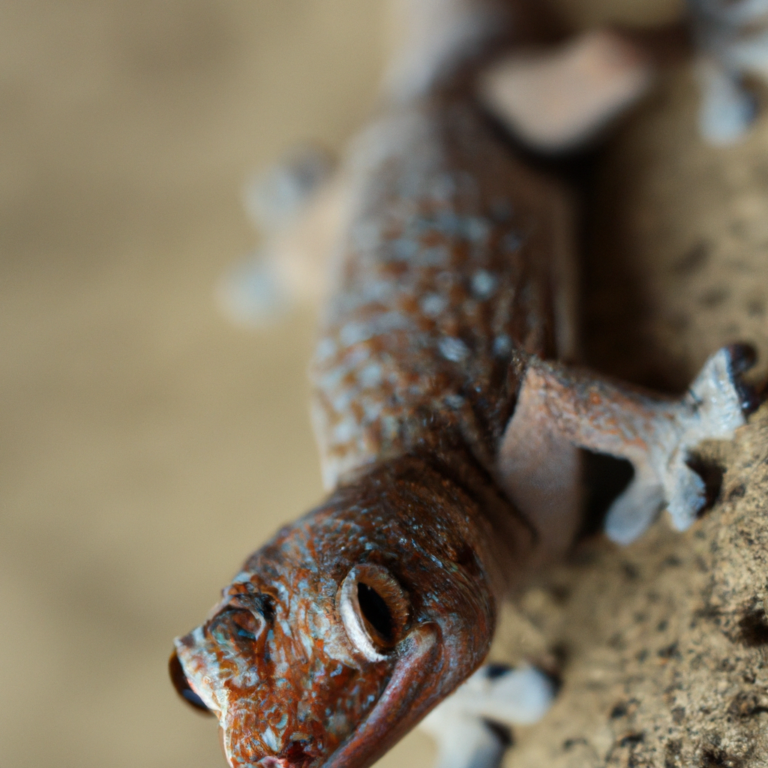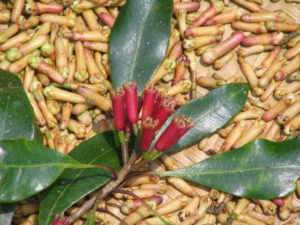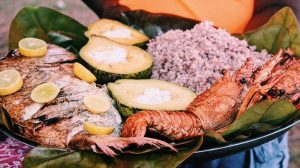Geckos and Uroplatus from Madagascar
Geckos in Madagascar are much larger, stranger, and more colorful than those in other tropical regions, where they are usually small animals recognized by their loud noises and habit of galloping through houses at night.
There are about sixty species of geckos in Madagascar.
Most geckos, the only lizards with a developed voice, are nocturnal. The bright green gecko of the genus Phelsuma is an exception to the rule, being active during the day.
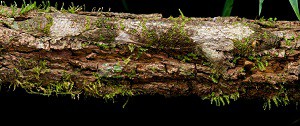
Phelsumen are beautiful geckos, often brightly green with red, yellow, or white punctuations or lines. Many species have been differentiated in all regions of the island. Although typically arboreal, some species have adapted to life on rocks in the mountains.
The Geckos of Madagascar
More than 80 known species of geckos are found in Madagascar.
Geckos, or animals that never sleep or at least always have their eyes open,
Madagascar’s geckos also belong to the rich fauna of our island.
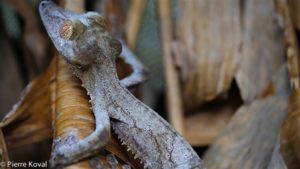
Most of Madagascar’s geckos are nocturnal, except for those belonging to the genus Phelsuma.
Chameleons are best known for their camouflage, but geckos are equally famous. In Madagascar, geckos literally blend into the landscape and take on the color of their natural habitat.
Geckos are among the most sought-after by large NAC (new pet) enthusiasts. One of the most well-known genera is Phelsuma, with its bright green colors, including the Phelsuma Grandis or the Giant Green Gecko from Madagascar.
More than 80 species of geckos have been identified in Madagascar, many of which are endemic. The genera Paroedura, Phelsuma, and Uroplatus are the most represented.
The different species of geckos in Madagascar:
The Blaesodactylus genus
The Blaesodactylus genus includes 04 species, all of which are endemic to Madagascar.
Blaesodactylus ambonihazo
Blaesodactylus ambonihazo has been recognized as a separate species since 2011, after being previously classified as part of the Blaesodactylus genus. Blaesodactylus antongilensis is a species of gecko that was classified in the genus Blaesodactylus. The Blaesodactylus Ambonihazo, also known as the Flat-tailed gecko, is endemic to the northwestern region of Madagascar. The word “ambonihazo” means “sitting on trees” in the Malagasy language.
The Blaesodactylus Ambonihazo was elevated to species status in 2011 after being considered a subspecies of Blaesodactylus Antongilensis for a long time.
Identification
The Blaesodactylus Ambonihazo has an elongated appearance with a slightly dark green-brown color and white patterns throughout its body. It was previously classified as a subspecies of Blaesodactylus Antongilensis.
Schwanz in Streifen übergehen.
Locations
Blaesodactylus Ambonihazo lives in the Ankarafantsika National Park, the only place where you can see it for sure. Its presence is also reported in some corners of the Ankarafantsika area, but it is almost impossible to find, such as near the Ravelobe Lake and near Bemaraha.
NP: Ankarafantsika
Blaesodactylus Antongilensis
The Blaesodactylus Antongilensis is a gecko of the genus Blaesodactylus, all endemic to Madagascar. It was discovered near the Bay of Antongil.

It was given the name “antongilensis”. In some documents, it can also be found under the name Homopholis antongilensis.
Identification
The Blaesodactylus Antongilensis has an elongated appearance. It has a dark brown color with white patterns all over the body, which turn into stripes on the tail.
Locations
The location of Blaesodactylus Antongilensis is not limited to the Antongil Bay, but also to a large part of the northeast of Madagascar.
It is clearly visible within the Marojejy National Park. It is also present on the island of Nosy Mangabe.
Blaesodactylus Boivini
The Madagascar Velvet Gecko or Blaesodactylus Boivini is a gecko of the genus. Blaesodactylus, endemic to Madagascar.

Identification
The Blaesodactylus Boivini has an elongated appearance. It has white patterns all over its body, which transform into stripes on the tail.
Locations
The Blaesodactylus Boivini lives in the northern part of Madagascar. It can be found in various locations, including Ankarana, on the different islands of the Diana region, in the. Reserves of the Ambre Mountain and Sahamalaza, as well as on the French Mountain.
Conservation Areas
NP: Ambre Mountain
Blaesodactylus Sakalava
The Giant Velvet Gecko of Madagascar with the scientific name Blaesodactylus Sakalava is a gecko of the genus Blaesodactylus endemic to Madagascar.

Note that the word “Sakalava” corresponds to an eponymous ethnic group, which
In the distribution area of Blaesodactylus Sakalava.
Identification
The Blaesodactylus Sakalava has an elongated appearance with a very thin tail.
It is quite massive, with a fairly wide head, its color varies between light brown and dark gray, with white spots and black dots all over the body. The adult can reach 25 cm.
In appearance, it is very similar to another species, Blaesodactylus Boivini, which is smaller.
Locations
The Blaesodactylus Sakalava can be found throughout the west and southwest of Madagascar, but strangely, it mostly lives outside protected areas.
The Genus: Ebenavia
The genus Ebenavia has only two species, of which.
Ebenavia is a gecko species endemic to Madagascar. Ebenavia is nocturnal and arboreal.
Ebenavia inunguis
The Nailless Gecko or Ebenavia inunguis is a gecko measuring just under 8 cm in length, blending easily into the landscape with its ochre-colored and striped appearance.
It is not endemic, in fact, Madagascar shares it with surrounding islands. It belongs to the genus Ebenavia.
Identification
The gecko Ebenavia inunguis is comfortable both on the ground and in trees. It is primarily insectivorous (feeding on cockroaches, crickets… and 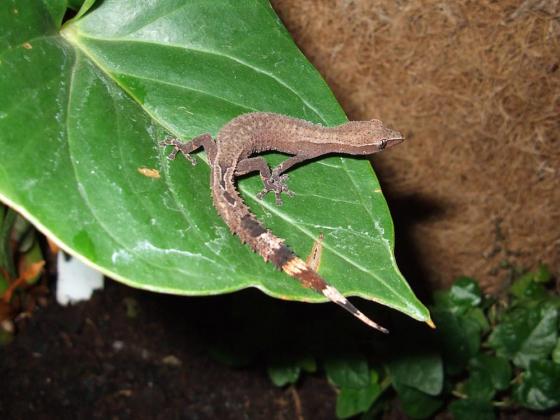
The Gecko Ebenavia inunguis is easily recognizable by its slender triangular head, marked by a clear horizontal line, extending into a wider body and a stout tail.
Its back is light ochre in color, with darker legs.
A type of separating rib, which may have a thin line of spines, is present on each side of the body. The length and location of this vein varies from region to region.
Locations
The Gecko Ebenavia inunguis is more widespread in eastern Madagascar. Its largest distribution area is between the protected area of Tampolo in the north and Andohahela in the south.
Then you can find them on the Ampasindava Peninsula in the west of Madagascar, on the Masoala Peninsula, at the northern tip of Madagascar, and on the islands of Sainte-Marie and Nosy-be.
Outside of Madagascar, they can be found on Mauritius, Mayotte, and the Zanzibar Archipelago. However, it seems that this animal was introduced to these islands. In this case, the Ebenavia inunguis would be completely native to Madagascar.
Conservation
RNI: Zahamena
NP: Zahamena, Mantadia, Ranomafana, South Midongy, Andohahela
RS: Nosy Mangabe, Lokobe.
Ebenavia maintimainty
Ebenavia maintimainty is primarily the endemic species of Madagascar from the Tsimanampetsotsa Reserve.
The word “maintimainty” literally translates to “black” in Malagasy.
It is found in a small area with limestone cliffs east of the Tsimanampetsotsa Lake on the Mahafaly Plateau.
The Genus: Geckolepis
The genus Geckolepis comprises three species, two of which are endemic to Madagascar and one that is shared with the Comoros Archipelago.
They are nocturnal animals.
Geckolepis maculata
The gecko Geckolepis maculata is a nocturnal and tree-dwelling gecko belonging to the genus Geckolepis and is widely distributed in several coastal areas in western Madagascar.
Characteristics
The gecko Geckolepis maculata is quite large and robust, measuring about 15 cm.
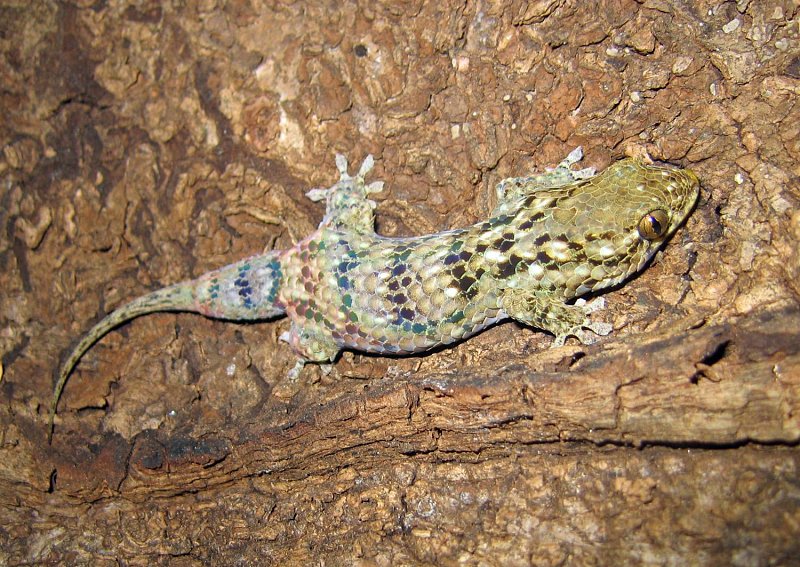
Its body is covered with small black stripes and spots on a generally creamy-brown background. Its large eyes are light brown with a black pupil that is vertically elongated.
Locations
The Gecko Geckolepis maculata can be found in several coastal areas in western Madagascar:
On the coastal strip between the city of Tulear in the south and the The city of Belo-sur-Tsiribihina is located in the northwestern region of Madagascar.
Located on the coastal strip between Cap Saint-André in the south and the National Park Sahamalaza – Radama Islands in the north, in the northeast of Madagascar, within the Marojejy National Park, which extends inland to Ankarafantsika, in a small area around the city of Tolagnaro in the southeast of Madagascar, and finally on the island of Nosy-be.
Outside of Madagascar, the Gecko Geckolepis maculata is also present in the Comoros Archipelago.
Conservation
National Parks: Andohahela, Baie de Baly, Ankarafantsika, Marojejy, Montagne d’Ambre
Special Reserves: Lokobe
Geckolepis polylepis
The Gecko Geckolepis polylepis is a species found in.
Madagascar endemic gecko belonging to the genus Geckolepis.
Features
The gecko Geckolepis polylepis is nocturnal. It has a creamy, scaly skin with several darker, sometimes even black spots. In some individuals, these spots can even form a kind of black band from the head to the tail.
Locations
The gecko Geckolepis polylepis is found in three different areas:
on a coastal strip in the northwest of Madagascar, near the Bay of Baly National Park and the Mahavavy – Kinkony wetland.
in an area north of the city of Morondava, including the Andranomena Special Reserve.
and
Finally, on the island of Sainte-Marie…
Conservation
NP: Bay of Baly
RS: Andranomena
Geckolepis typica
The Geckolepis typica, also known in some documents as Geckolepis petiti, is a species widely distributed throughout the western part of Madagascar.
The Genus Gehyra
The genus Gehyra comprises more than forty species found worldwide, but only one of them is represented in Madagascar, the Gehyra Mutilata.
Gehyra mutilata
The Gehyra mutilata is a species found on the African, Asian, and Australian continents, as well as in Madagascar.
Description
Head longer than wide; snout longer When it comes to the distance between the eye and ear opening, it is about 1.3 times the diameter of the eye socket; forehead with a median groove; ear opening moderately large, suboval.
Body and limbs moderately elongated, compressed, with a skin fold that limits the hind limbs backwards.
Fingers short, more or less webbed at the base; lower lamellae angled, divided by a central groove.
Upper side and throat covered with small granular scales, largest and flattest on the back. Belly scales moderate. Rostral square, wider than deep, with a median cleft on top; nostril pierced between the rostral plane, the first lip, and three nostrils, with the upper.
The Hemidactylus genus includes more than 50 species that are distributed worldwide. Four species of Hemidactylus have been identified in Madagascar.
Hemidactylus mabouia
Hemidactylus mabouia is a house gecko. In the West Indies, they are called house geckos. They can be found on the American and African continents.
Habitat
In their original range, the habitat of tropical house geckos is much larger and generally in contact with their counterparts.
Behavior
Like many other geckos, they are highly adaptable to their environment, although they typically prefer forests, rocky areas, and human dwellings.
In the African tropical forests and shrublands. Today, they are widespread and their habitats include sandy areas, scrublands near beaches, on tree trunks, and on the outer walls of houses.
They are commonly found in urban and suburban areas – as their common name suggests, they often live inside houses.
They can live very close to sea level (5 meters) up to heights of 1600 meters.
Description
Tropical house geckos have a slender body and a flat head that is wider than their neck. Most of their body
The tropical house geckos are covered with black/brown bands, but they also have the ability to change their color depending on temperature and light.
Their colors can range from dark brown to almost white gray. Tropical house geckos also have dorsal scales and possess tubercles that are arranged in rows on their bodies.
They have lamellae on the surfaces of their toes, which are the spine-like scales that help geckos grip onto vertical surfaces.
Behavior
Tropical house geckos are arboreal and their toe pads allow them to climb excellently. They are fairly sedentary creatures.

The Hemidactylus frenatus, this large mosquito and ant hunter of houses, is found in almost all countries of the southern hemisphere and also in Madagascar.
Hemidactylus mercatorius
The Hemidactylus mercatorius is a gecko from the African continent and from the islands.
Geckos are small, diurnal lizards found in Africa south of the Sahara and on islands in the Indian Ocean, with a significant number of endemic species in Madagascar. The Hemidactylus platycephalus species is similar to the Hemidactylus frenatus and can be found on the African continent.
The genus Lygodactylus includes about 30 species, with approximately 20 endemic species in Madagascar out of the 22 listed. These geckos are small and active during the day. One example is the Lygodactylus arnoulti, a ground gecko found in the regions of Haute Matsiatra and Amoron’i Mania.
the Massifs of Ibity and Itremo, in the village of Ambatofinandrahana in the southern part of the Malagasy Highlands.

Characteristics
Pasteur’s dwarf gecko has a compact and large body. Its skin is gray with short dark transverse stripes. It has a head with a short, rounded snout.
Conservation
NAP: Ibity (in
Lygodactylus bivittis
The tiny gecko Lygodactylus bivittis is an endemic gecko found in the eastern and northeastern regions of Madagascar, living in the highlands between 300 and 1000 meters above sea level.
The gecko Lygodactylus bivittis is classified as “vulnerable” and belongs to the genus Lygodactylus.
Characteristics
The gecko Lygodactylus bivittis is a tree-dwelling day gecko. It is grey in color, with dark stripes on its skin. It is distinguished from other species in the genus Lygodactylus by the presence of undivided lamellae on its fingers and toes, and a claw.
Lygodactylus bivittis also has granular dorsal scales and an untwisted tail.
Location
The gecko Lygodactylus bivittis lives in the eastern and northeastern part of Madagascar. Its range extends from the Marojejy National Park in the north to the Mantadia National Park in the south.
Conservation
National Parks: Marojejy, Mantadia
Reserve: Analamazaotra
Natural Protected Area: Makira
Lygodactylus blancae
The gecko Lygodactylus blancae is a gecko endemic to the Itasy region, particularly in an unprotected area located barely 70 km2 west of the Itasy Lake.
The gecko Lygodactylus blancae is classified as “near threatened” and belongs to the genus Lygodactylus.
It was named after the Named after the French biologist Françoise Blanc, who lived in Madagascar for a long time and conducted several research studies on the Malagasy fauna.
Features
The gecko Lygodactylus blancae is a day gecko that lives in trees. They particularly love fig trees. However, they can also be found on rocky ground around swamps and rivers.
The gecko Lygodactylus blancae is gray and cream-colored on the back and yellowish on the belly. There are also black spots on the throat that seem to form irregular horizontal lines. On the other hand, the tail is curled.
Lygodactylus decaryi
Lygodactylus decaryi is an endemic gecko in the southeastern part of Madagascar. The Gecko of the Angavo Massif is named after the researcher Raymond Decary.
Lygodactylus expectatus is endemic to the northern region of Madagascar, occupying a small territory in the Special Reserve of Ankarana.
Lygodactylus guibei, named after the French naturalist and herpetologist Jean Marius René Guibé, is an endemic species of Madagascar, mainly found in Analamazaotra and Ambohitantely.
Lygodactylus heterurus, another endemic species of Madagascar, is primarily found in the northern part of the island and occasionally in the Bemaraha Nature Reserve.
Lygodactylus intermedius is a species found in Madagascar. Madagascar endemic gecko found in an area of just over 300 km² in the Andringitra Massif.
Lygodactylus klemmeri
The Madagascar dwarf gecko or Lygodactylus klemmeri is an endemic species in Madagascar, living in the heart of the Tsingy of Bemaraha. It was named after the naturalist Konrad Klemmer.
Lygodactylus klemmeri Pasteur, 1964 is a small diurnal gecko described based on a single male specimen from the Antsingy forest in western Madagascar.
Description
Lygodactylus klemmeri is characterized as a member of the L. verticillatus group, as defined above, by its distinctly whorled tail.
He is sub
Coloration of the belly in life (usually whitish and not distinctly yellow in L. tuberosus) and by the presence of only a dark stripe behind the eye (as opposed to a dark marking behind the eye containing spiny scales in most individuals).
Typically, specimens of L. pictus are relatively large, but some individuals classified as L. tuberosus can also reach large sizes (up to 38 mm).
It is evident that the definitions of these species need to be revised, and the specimens assigned here to either L. pictus or L. tuberosus do not form homogeneous groups.
Lygodactylus rarus
The Lygodactylus rarus is… An endemic species in Madagascar, only found in the Ankarana Massif.
Lygodactylus roavolana
Lygodactylus roavolana is an endangered species endemic to Madagascar. It inhabits the southeast, particularly in Andohahela. The name “roa volana” in Malagasy literally means two months.
Lygodactylus tolampyae
Lygodactylus tolampyae is an endemic species in Madagascar, found throughout the western part of the island. It is particularly notable for the “V” shaped lines on its body.
Lygodactylus tuberosus
Lygodactylus tuberosus is an endemic species in Madagascar, living in the southwest of the island.
Lygodactylus verticillatus
Lygodactylus verticillatus is a species found in the Indian Ocean. Endemic species. It lives in the far southwest. It can also be found on the scattered islands.
The Genus: Matoatoa
The word “Matoatoa” means “ghosts” in Malagasy. And indeed, the sight of these animals, especially when they move, can send shivers down one’s spine.
The genus Matoatoa consists of two species, all endemic to Madagascar. They are very small animals.
Matoatoa brevipes
The Matoatoa brevipes is a brown-gray gecko with a very elongated tail. It is visible in a large area in the southwest of Madagascar.
Matoatoa spannringi
The Matoatoa spannringi is named after Jürgen Spannring. It lives on the scattered islands. In a small town in the south called Fiadanana.
The Genus Paragehyra
The genus Paragehyra comprises two species, all endemic to Madagascar. This genus was first described in 1929.
Paragehyra gabriellae
The Paragehyra gabriellae is a gecko named after Gabriella Raharimanana. This animal is endemic to a small village in southeastern Madagascar, including the Andohahela Reserve.
Calumma petiti
The Calumma petiti is a gecko endemic to a forest in southwestern Madagascar near the village of Lavenombato. It has been reported in the Bemaraha Reserve, but seems to be extinct at that location.
The Paroedura Genus
The Paroedura genus includes 17 species endemic to the Indian Ocean, 14 of which are endemic to Madagascar.
The Paroedura genus is nocturnal and tree-dwelling.
The two species that are not endemic to Madagascar but are found on the Comoros Archipelago are the Paroedura sanctijohannis and the Paroedura stellata.
Paroedura androyensis
The Paroedura androyensis, sometimes referred to as the “Panther Gecko,” is the smallest but also the most famous gecko of the Paroedura genus. It can indeed be easily exported and is highly sought after by NAC enthusiasts or new pet owners.
Estimated
As its name suggests, the Paroedura androyensis is endemic to the Androy Region and surrounding areas in southern Madagascar.
Grandidier was the first to describe it in the 1860s. This gave it the other names “Le Paroedura de Grandidier” or “le Gecko pygmée de Grandidier”. It is also classified as “vulnerable”.
Description
As an adult, the Gecko Paroedura androyensis is only about 7 cm long. Males are generally smaller than females, both in size and length.
The predominant color is brown or gray-brown, with patterns resembling those of panthers, with a mixture of The gecko Paroedura androyensis is a nocturnal animal with light and dark patterns, hence its nickname. The lower part of its body is light, with only a few spots on the neck.
This nocturnal creature lives on the ground and usually seeks refuge under roots and trees. It is very agile and has no problem climbing trees. It typically stands on its legs, a few millimeters above the ground.
The Gecko Paroedura androyensis mainly feeds on insects.
Location
The Gecko Paroedura androyensis is only visible in the south of Madagascar. Its distribution area consists of a coastal strip between the cities of Tuléar in the west and Fort-Dauphin in the east.
Conservation
NP: Andohahela National Park. Zombitse National Park
RS: Kap Sainte-Marie
Paroedura bastardi
The Paroedura Bastardi is a gecko belonging to the Paroedura genus and endemic to Madagascar, particularly in two regions of the island, the Bemaraha Nature Reserve and the Ankarana Reserve.

Its other name, Paroedura guibei, was given in honor of the herpetologist Jean René Guibei.
Identification
The Paroedura bastardi is a compact gecko with a distinctive pattern on its skin. Gecko with triangular head, marbled in gray, brown, or pink. The skin is adorned with two stripes bordered by black spots.
It also has numerous dorsal warts arranged in rows, giving the animal a thorny appearance. The Bastardi Gecko Paroedura bastardi also has large copper eyes with vertical pupils.
Location
The Gecko Paroedura bastardi occupies a very wide coastal strip in the east and south of Madagascar. Its distribution is delimited by the Cap Saint-André Wetland in southwestern Madagascar to Andohahela in southeastern Madagascar.
They are mainly found in dry forests and rocky reliefs, living on the ground.
Conservation
NRT: Self-Drive Baobab Tour with Tsingy from Bemaraha
NP: Tsimanampetsotsa, Andohahela, Bemaraha, Mikea, Kirindy Mitea
RS: Bemarivo, Andranomena
Paroedura gracilis
The Paroedura gracilis is a gecko belonging to the Paroedura genus, endemic to Madagascar, particularly in the humid and semi-humid forests of the northeastern part of the island.
Description
The Paroedura gracilis is a gecko mostly brown or gray in color, with distinct dark lines that extend down the entire body to the tail.
Paroedura gracilis is a gecko that spends most of its time on. spends most of its time on the ground. However, it is also comfortable in trees.
It is usually a nocturnal animal but can also hunt during the day. It mainly feeds on insects.
Location
The Paroedura gracilis gecko occupies a large coastal area in northeastern Madagascar, excluding low-lying areas.
Its range extends from the surroundings of Brickaville in the south to the Masoala Peninsula in the north. Exceptionally, it can also be found in the Amber Mountain National Park in northern Madagascar.
Conservation
NP: Andasibe, Marojejy, Masoala, Amber Mountain
RS: South Anjanaharibe, Manongarivo, Nosy Mangabe
Others: Tampolo
Paroedura homalorhina
The Paroedura Homalorhina. Paroedura is a gecko belonging to the Paroedura genus. They are endemic to Madagascar, particularly in two regions of the island, the Bemaraha Nature Reserve and the Ankarana Reserve.
Identification
The Paroedura Homalorhina is brightly colored and measures about 10 cm.
Paroedura ibityensis
The Paroedura ibityensis is the gecko of the Ibity and Itrimo mountains in Vakinankaratra. It is also endemic to Madagascar.
Paroedura karstophila
The Paroedura karstophila, an endemic species, is the gecko of the karst, or Tsingy. It can be found in the Tsingy of Bemaraha, but also in the Tsingy of Namoroka.
Paroedura lohatsara
The Paroedura lohatsara is an endemic gecko found on the French Mountain in the Diana region.
Paroedura maingoka
The Paroedura maingoka is an endemic gecko in Madagascar. The word “maingoka” means “scorpion” in Malagasy, probably because of its tail that rises like that of a scorpion.
Paroedura Masobe
The Paroedura Masobe, or “Katsatsaka” in Madagascar, is a gecko found only in the Integral Nature Reserve and the Zahamena National Park. This species is also legally exported, with an annual quota of 10 individuals.
The Paroedura belongs to the genus Paroedura. It is an endemic species in Madagascar that has unfortunately been classified as “endangered.”
Identification
The Paroedura Masobe is easily recognizable with a black color that is white-spotted, and large black eyes.
Locations
The Paroedura Masobe can only be found within the Zahamena National Park. Outside of the park, where it has been reported, it is very rare, especially in Betampona and along the Zahamena-Ankeniheny forest corridor.
Paroedura oviceps
The Paroedura oviceps is endemic to northern Madagascar. It is found in several reserves, including the Manongarivo reserve and the Amber Mountain.
Paroedura picta
The Paroedura picta is one of the most well-known geckos in Madagascar, prized for its beauty and found in captivity all over the world.
The Panther Gecko (Paroedura picta) is a small gecko native to the dry areas (forests and savannas) in the south and west of Madagascar.
Although primarily terrestrial, they sometimes climb on rocks or stumps.
They are strictly insectivorous and nocturnal. As adults, they reach a height of 10 to 15 cm and are named for the light spots on the upper part of their bodies.
Adults are easily sexually mature, with males having hemipenile pockets in the. has a unique color yourself. The name “vazimba” refers to the ancient inhabitants of Madagascar.
These geckos are part of the Paroedura genus, known for their distinctive features and behaviors. They are popular among reptile enthusiasts for their interesting characteristics.
If you are interested in learning more about these fascinating creatures, be sure to visit the following links: Mikea and Tsimanampetsotsa.
In Ankarafantsika National Park is a must-see destination in Madagascar.
The Genus Phelsuma
The genus Phelsuma is most prevalent in Madagascar.
It includes more than fifty species, with about thirty endemic to Madagascar (out of the 34 species listed).
The geckos of the genus Phelsuma, also known as Phelsumas, are medium-sized, up to 30 cm in length.
They are diurnal and arboreal.
Phelsuma abbotti
The gecko Phelsuma abbotti chekei is an endemic species in Madagascar, belonging to the genus Phelsuma.
The subspecies Phelsuma abbotti chekei itself belongs to the species Phelsuma abbotti, with three other subspecies endemic to the Seychelles archipelago:
Phelsuma abbotti abbotti,
Phelsuma…
Abbott’s day gecko,
Phelsuma abbotti pulchra.
Phelsuma abbotti chekei
Phelsuma abbotti chekei is endemic to northern and western Madagascar. It is named after American naturalist William Louis Abbott. Additionally, the word “chekei” comes from English ornithologist Anthony S. Scheck.
Description
The gecko Phelsuma abbotti chekei is diurnal and lives in trees.
They are rarely seen on the ground, preferring palm and coconut trees. In urban areas like Nosy-be, they can settle in houses.
The skin color of Phelsuma abbotti chekei varies from green to blue on the most visible parts and from light gray to pearl gray on the sides.
The gecko Phelsuma abbotti chekei is adorned with small red dots on its back and legs. These dots may be more or less visible depending on the individual, along with a clear line running across its entire body.
Adult males of this species can measure up to 15 cm, while females are slightly smaller.
Location
The Gecko Phelsuma abbotti chekei is scattered across various areas in the north and northwest of Madagascar, especially on the islands off the northwest coast, in the northernmost part of the island above the Daraina Reserve, along the coast from Antsiranana to Antsalova, and primarily in Bemaraha and Namoroka.
Conservation
RNI: Lokobe
NP: Ankarana, Bemaraha, Amber Mountain, Namoroka, Nosy Hara, Nosy Tanikely, Sahamalaza
RS: Analamerana
Andere: Andavokoera, Daraina, Montagne des Français, Nosy Mamoko, Nosy Sakatia
Phelsuma-Antanosy
The Phelsuma Gecko antanosy is a gecko of the Phelsuma genus. It is one of the most endangered geckos in Madagascar, classified as “critically endangered.”
As the name suggests, it is only found in the Anosy region in the southeast of Madagascar.
The Phelsuma gecko Phelsuma antanosy is diurnal and lives in trees, mainly feeding on insects.
The Phelsuma antanosy can be identified from other species of the genus by three red lines on its light green back. There are.
Also a few bruises on the body, especially above the eyes and on the tail. In addition, it rarely exceeds a length of 10 cm.
Location
The Gecko Phelsuma antanosy is native to the southeast of Madagascar, where it occupies only small separate territories. Particularly noteworthy are the NAP Sainte-Luce and the forest of Ambatotsirongorongo, west of the city of Fort-Dauphin. The Gecko Phelsuma antanosy particularly appreciates the leaves of the Pandanus leptoporus as shelter.
Conservation
Others: Sainte-Luce
Phelsuma barbouri
The Phelsuma Gecko Phelsuma barbouri is a gecko from the genus Phelsuma, named after the American herpetologist Thomas Barbour. It is a Geckos that live on rocks and are only found in a few places in the highlands of Madagascar.
Characteristics
The Phelsuma barbouri gecko is diurnal and particularly loves rocky areas. It mainly feeds on insects and other invertebrates.
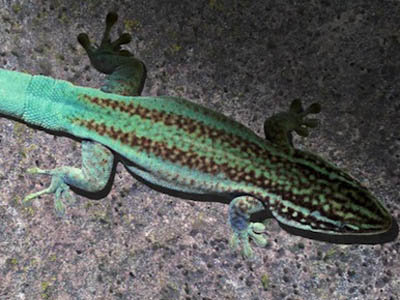
Its color ranges from cream green to dark green, a color highly valued by collectors.
In addition, dark brown stripes run along its body from head to tail.
Location
This Phelsuma species is found in the highlands of Madagascar, where it inhabits rocky areas. is endemic to Madagascar and can be found in four different locations that share a common altitude (over 1600 m): Andringitra, Ankaratra, Antoetra, Ibity.
It is important to note that in these regions, temperatures vary significantly between day and night, as well as between seasons.
Phelsuma berghofi
Phelsuma berghofi is endemic to the Atsimo-Atsinanana region in southern Madagascar. It was named after Hans-Peter Berghof.
Phelsuma borai
Phelsuma borai is endemic to Madagascar and is only found in the Bemaraha National Park.
Phelsuma breviceps
The Phelsuma breviceps is endemic to the Atsimo-Andrefana region, visible near Tulear.
Phelsuma dorsivittata
Phelsuma dorsivittata is endemic to Madagascar. Endemic species. The species was long considered a subspecies of Phelsumma lineata, but was elevated to full species status in 2010.
Phelsuma dubia
Phelsuma dubia is not endemic. It is also found in some African countries. It is likely the least colorful species of the genus Phelsuma.
Phelsuma flavigularis
Phelsuma flavigularis is endemic to Madagascar. It can only be found in Andasibe. It is a critically endangered species.
Phelsuma gouldi
The Phelsuma Gouldi is endemic to the Haute-Matsiatra region. It was named after the American paleontologist Stephen Jay Gould.
Phelsuma grandis
The Phelsuma grandis is a species native to Madagascar.
The island of Madagascar is home to a variety of endemic Phelsuma species, including the Phelsuma guttata in the northeast and the Phelsuma hielscheri, named after Michael Hielsher. Another endemic species, the Phelsuma hoeschi, can be found in the Atsinanana region, particularly near Brickaville. The Phelsuma kely, on the other hand, is only found near the Ampitabe Lake, south of Toamasina. Lastly, the Phelsuma klemmeri, described in 1991, is also endemic to Madagascar.
is ebenfalls türkisfarben mit schwarzen Punkten.
Der Neongecko ist ein beliebtes Haustier aufgrund seiner lebhaften Farben und seines interessanten Verhaltens. Er benötigt ein spezielles Terrarium mit feuchtem Substrat und Kletterästen, um seinen natürlichen Lebensraum nachzuahmen.
Es ist wichtig, dass die Temperatur und Luftfeuchtigkeit im Terrarium konstant gehalten werden, um die Gesundheit des Geckos zu gewährleisten.
Der Neongecko ernährt sich hauptsächlich von Insekten und benötigt eine abwechslungsreiche Ernährung, um alle notwendigen Nährstoffe zu erhalten.
Wenn Sie daran interessiert sind, einen Neongecko als Haustier zu halten, sollten Sie sich vorher über die artgerechte Haltung informieren, um sicherzustellen, dass Sie ihm ein gesundes und glückliches Zuhause bieten können.
The Day Lined Gecko, or Phelsuma, is a turquoise-gray colored lizard that feeds on small insects and ripe fruit flesh.
Phelsuma kochi
Phelsuma kochi is endemic to the northwest of Madagascar, particularly in the Boeny region.
Phelsuma laticauda
The Day Gecko, or Phelsuma laticauda, is a gecko found on several islands in the Indian Ocean, as well as in French Polynesia and Hawaii.
Phelsuma lineata
Phelsuma lineata is endemic to Madagascar and is one of the most common geckos on the island, found almost everywhere. It is found in the central, eastern, and northwestern parts of the island, depending on the subspecies.
During the day, the temperature exceeds 25°C, with local peaks reaching 30°C. At night, the temperature drops to around 20°C. The humidity varies between 60 and 80% depending on the time of day and season. In winter, temperatures drop slightly.
The Striped Phelsuma is a bright green tree gecko with a large red spot in the middle of its back that fades and extends towards the back. It also has a small red spot on its head and a black line on each side. The tail can vary in color, ranging from lighter yellowish to sometimes bluish, depending on the individual. The Phelsuma lineata gecko can grow up to 130 mm for the lineata subspecies and up to 100 mm for the bombetokensis subspecies. This gecko is insectivorous, but also eats fruits and licks the flesh of the fruit.
It has four subspecies: Phelsuma lineata lineata, Phelsuma lineata bombetokensis, Phelsuma lineata elanthana, and Phelsuma lineata punctulata.
Phelsuma madagascariensis is endemic to Madagascar, found along the entire east coast. It has two subspecies: Phelsuma madagascariensis madagascariensis and Phelsuma madagascariensis boehmei.
Phelsuma malamakibo is an endemic species found in the Andohahela Reserve in Madagascar. “Malama kibo” means “smooth belly” in Malagasy. The Phelsuma Masohoala is endemic to Madagascar and can only be found on the Masoala Peninsula. It is a critically endangered species.
Phelsuma modesta is endemic to the southwest of Madagascar and has three subspecies: Phelsuma modesta modesta, Phelsuma modesta isakae, and Phelsuma modesta leiogaster.
Phelsuma mutabilis is endemic to Madagascar. It is a brown gecko with a relatively bulky lighter tail. Small lighter or darker spots are visible on its back, and a dark line runs from the nose to the neck through the eyes.
Phelsuma parva is found in the southeastern coastal region. Madagascar’s endemic species, starting from the city of Tamatave.
Phelsuma pronki
Phelsuma pronki is endemic to the Analamanga region. It is a critically endangered species discovered by my late friend Olaf Pronk.
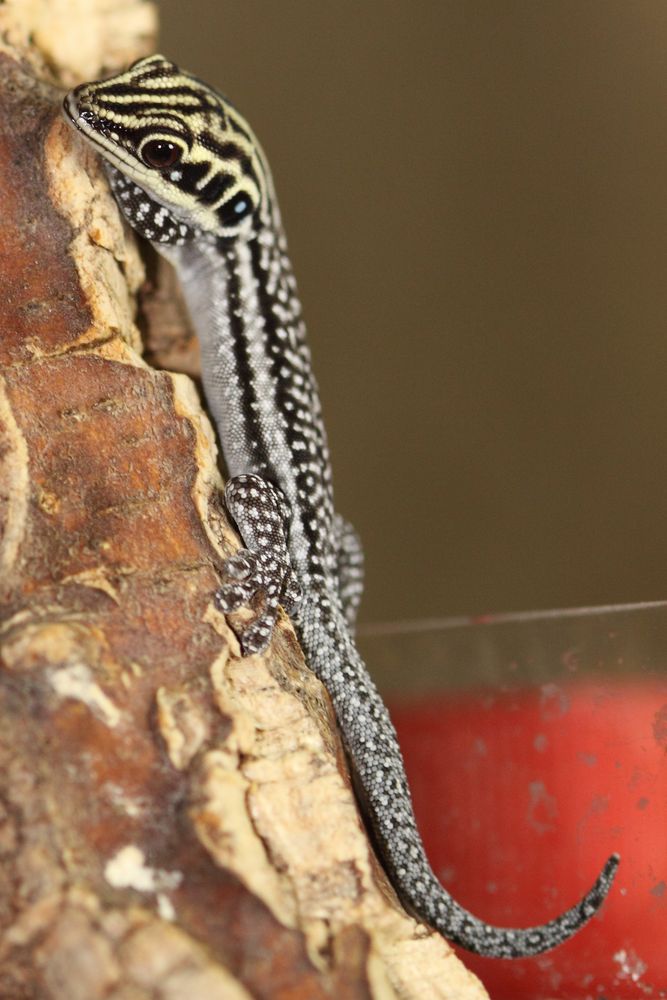
This small gecko is collected for the international pet trade.
It is evident that this species has become very rare and is experiencing significant population declines. In combination with the pressure of the international pet trade, the species is threatened by significant habitat loss and fragmentation. This is driven by deforestation and agricultural practices.
This small-sized species is limited to a small area in central Madagascar of less than 100 km² and is listed as critically endangered on the IUCN Red List.
It is listed in CITES Appendix II, and urgent protected areas need to be established to halt the current loss of habitat throughout the species’ range.
Distribution
This species is found in the central highlands of Madagascar in the Andramasina region.
Habitat and Ecology
It is found in the central highlands of Madagascar in the Andramasina region.
Phelsuma pusilla is a tree-dwelling species that is found in the humid rainforest. It appears to mainly live on dead trees.
Phelsuma pusilla
Phelsuma pusilla is endemic to Madagascar, the best places to observe them are in the east of Madagascar, especially Perinet, Ambila Lemaitso, Tamatave, Fénérive), Ste. Marie.
It is a green Phelsuma with a blue tail. It has two subspecies: Phelsuma pusilla pusilla and Phelsuma pusilla hallmanni.
It is a diurnal and tree-dwelling gecko of green color, tending towards blue on the tail, with red spots on the lower half of the back and a.
Located in the middle of the forehead.
Phelsuma quadriocellata
Phelsuma quadriocellata is a gecko endemic to Madagascar, living in the humid forests of eastern Madagascar.
It has three subspecies: Phelsuma quadriocellata quadriocellata, Phelsuma quadriocellata bimaculata, and Phelsuma quadriocellata lepida.
Phelsuma ravenala
Phelsuma ravenala is a gecko endemic to the east of Madagascar. As the name suggests, it mainly lives on the Ravinala plant or Traveler’s tree.
Phelsuma roesleri
Phelsuma roesleri is endemic to Madagascar. It lives on the Ankarana Massif, within the eponymous Special Reserve.
Phelsuma seippi
Phelsuma seippi is endemic and classified as “endangered.” It is found in the Ankarana Massif, within the eponymous Special Reserve.
Area found by Diana.
Phelsuma serraticauda
Phelsuma serraticauda is endemic to the coastal region in northeastern Madagascar. It lives on coconut and banana trees.
It is a day gecko with a slightly flattened tail. It measures up to 130 mm, with females being slightly smaller than males.
The base color is green, pale on the tail and lighter on the legs.
Three dark red stripes run across the head.
On the back, at the level of the hind legs, three small red longitudinal stripes are visible. There are…
There is also a small yellowish (pale) line along the spine behind the head. The skin has a rough appearance. Phelsuma serraticauda mainly feeds on insects, pollen, fruits, and nectar.
Phelsuma standingi
Phelsuma standingi is endemic to Madagascar. It is a rather impressive animal that can grow up to 30 cm long.
Phelsuma vanheygeni
Phelsuma vanheygeni is a gecko endemic to Madagascar, living on the Ampasindava Peninsula in the Diana region.
The Uroplatus Genus
The Uroplatus genus, or leaf-tailed geckos, are masters of camouflage. Their name comes from their flat tails, aiding in their disguise.
Mimicry in Madagascar: Discover the unique leaf geckos of the Uroplatus genus, endemic to the island. With 14 known species and more yet to be discovered, these geckos mimic moss, tree trunks, bark, and dead leaves. Nocturnal, arboreal, and insectivorous, they are a fascinating sight in the wild.
Uroplatus alluaudi
Endemic to Madagascar, the Uroplatus alluaudi is a gecko species classified as near threatened. Found in only a few locations on the island, this species is a must-see for wildlife enthusiasts.
Region Diana in the north of Madagascar. The Uroplatus alluaudi is very closely related to the Uroplatus guentheri and is often confused with it.

Identification
The Alluaudi Uroplatus is the smallest representative of the Uroplatus genus. It has a flattened head and a short, serrated tail.
Characteristics
Uroplatus alluaudi is nocturnal, arboreal, and insectivorous. It is rarely found in the wild. It is highly sought after by collectors for its unique appearance.
Fast and highly skilled at camouflaging.
Locations
The Alluaudi Uroplatus only lives in tropical rainforests, including the Amber Mountain, Daraina, Besarika, and Marojejy.
Conservation
National Parks: Amber Mountain, Daraina, and Marojejy
Uroplatus ebenaui
The Uroplatus ebenaui or Spear-tailed Gecko is a gecko of the Uroplatus genus classified as “vulnerable.” It can be found in the northernmost part of Madagascar, in the Diana region and on Nosy-be Island.
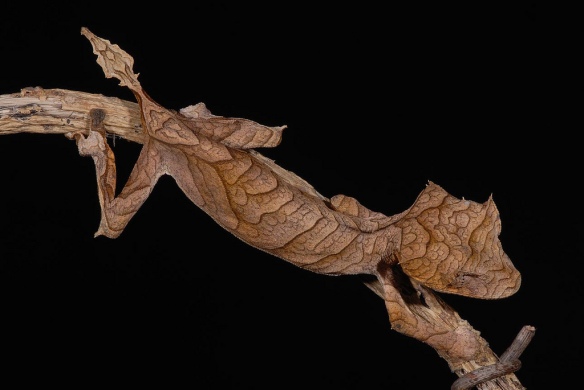
Named after him.
It is often confused with the Uroplatus phantasticus, which only differs from it in the length of its tail (slightly longer).
Features
Uroplatus ebenaui is nocturnal, arboreal, and insectivorous. It has a great ability to camouflage itself with its atypical appearance.
In fact, it closely resembles a dead leaf, with a gray-beige color with numerous dark spots on the dorsal part and a tendency towards orange on the ventral part.
Locations
Uroplatus ebenaui only lives in the tropical rainforests of the far north of Madagascar. Its distribution is bordered to the southwest by the city of Ambanja and to the southeast by the Andrafiamena Special Reserve is delimited.
Conservation
NP: Amber Mountain, Daraina, Andrafiamena, Lokobe
Uroplatus fimbriatus
The leaf-tailed gecko, Uroplatus fimbriatus, is a gecko of the Uroplatus genus found in the east of Madagascar.
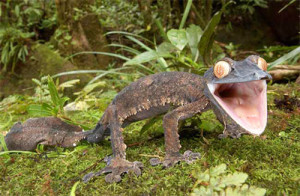
Features
Uroplatus fimbriatus is nocturnal and lives in trees, rarely leaving them. It can blend into its surroundings very effectively.
The Blatt-tailed gecko is able to camouflage well and is capable of making quite spectacular jumps.
Close to Uroplatus giganteus, the Blatt-tailed gecko, measuring about 30 cm in length (including tail), is one of the largest in the Uroplatus genus. Its color is gray-brown, with patterns that mimic tree bark. Its eyes have red-gold stripes.
Locations
The Blatt-tailed gecko lives in the tropical rainforests of eastern Madagascar. Its distribution is bounded in the north by the Masoala Peninsula and in the south by the South Midongy National Park.
Their presence in Andohahela, at the southern tip of Madagascar, is no longer confirmed.
Conservation
RNI: Zahamena
NP: Sud Midongy, Nosy Mangabe, Ranomafana, Mantadia, Zahamena, Nord Mananara
Uroplatus finiavana
Uroplatus finiavana is a gecko that lives in the Montagne d’Ambre Reserve. The word “finiavana” means courage in Malagasy, or more precisely, the ability to move forward or take risks.
Uroplatus giganteus
Uroplatus giganteus lives in the northeast of Madagascar. It is very similar to Uroplatus fimbriatus, but slightly larger, reaching up to 35 cm.

It can be found on the Amber Mountain between 750 and 900 meters in altitude, as well as in the Montagne d’Ambre National Park.
Description:
Similar to Uroplatus fimbriatus, but slightly larger. One specimen has been recorded at 350 mm, making it one of the largest, if not the largest, gecko. It is a nocturnal tree species that prefers a temperature range of around 26°.
With a massive appearance, featuring a highly advanced camouflage and barbs around the body that help dissolve shadows when the animal rests on trees.
Classification
This species was long considered a type of Uroplatus fimbriatus. It is now recognized as a separate species, differing from U. fimbriatus by its larger average size and white-colored pupils.
Nutrition
It is an insectivore that captures its prey when it passes by within its reach or falls from branches onto it. Due to its size, it can occasionally prey on small birds, mammals. Günther benannt, einem deutschen Zoologen, der sich auf Reptilien spezialisiert hat.
Uroplatus guentheri ist nachtaktiv und ernährt sich von Insekten, die es mit seiner langen Zunge fängt. Es ist wichtig, dass sein Lebensraum geschützt wird, da die Zerstörung seines Lebensraums zu einem Rückgang der Population führen kann.
Uroplatus phantasticus
Uroplatus phantasticus ist ein weiterer Gecko aus Madagaskar, der für seine einzigartige Tarnung bekannt ist. Mit seinem langen, dünnen Körper und seinen großen Augen kann er sich perfekt an Baumrinde anpassen und so Beute jagen oder Raubtiere abwehren.
Es ist wichtig, dass Maßnahmen ergriffen werden, um den Lebensraum dieser faszinierenden Tiere zu schützen, um ihr Überleben zu sichern.
Günther named.
Uroplatus henkeli
The Uroplatus henkeli is a gecko that lives in western Madagascar. This species is classified as endangered.
Uroplatus lineatus
Uroplatus lineatus is a gecko that lives in the bamboo forests of eastern Madagascar, protected from the sun from which it seems to flee.
Uroplatus malahelo
Uroplatus malahelo is a gecko that lives in the south of Madagascar, the word “Malahelo” means “sad” in Malagasy.

Listed as endangered on the IUCN Red List due to its highly fragmented populations, ongoing habitat loss, and small population size.
Found in three protected areas throughout its range and listed on CITES Appendix II. Control of illegal collection for the pet trade may be necessary for this species.
Distribution
This species is endemic to southern Madagascar. It is found in three protected areas but has a highly fragmented distribution.
Habitat and Ecology
This leaf-tailed gecko rests under tree bark during the day.
It prefers intact moist forests.
Uroplatus malama is a leaf-tailed gecko endemic to the southeastern region of Madagascar, around Mount Anosy. It inhabits transitional forests and is extremely sensitive to disturbances in its habitat.
Uroplatus malama

It is most similar to Uroplatus ebenaui, from which it differs in scaling, coloration, and hemipenis structure. This taxon is distinct from all other species by its unique characteristics.
The absence of skin spines on the head, body, limbs, and tail base.
The species is classified as endangered.
Uroplatus phantasticus
Uroplatus phantasticus (Satanic Leaf-tailed Gecko) seems to come straight out of a fantasy world.
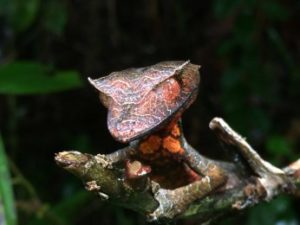
DESCRIPTION, DISTRIBUTION, AND BIOLOGY
The Satanic Leaf-tailed Gecko (Uroplatus phantasticus (Boulenger, 1888) is one of the smallest. Blattschwanzgeckos.
He has a total length of about 100-110 mm: the SVL is 55-70 mm, the TL is about 40 mm. The head is not flattened and ends in a rounded snout.
A prominent row of scales in the interorbital and occipital regions forms a V-tip at the neck.
The body is laterally compressed, making these animals a perfect example of phytomimicry even within the genus Uroplatus.

These geckos have no eyelids, but only a transparent covering on their eyes, and therefore they use long, movable tongues to wipe dust or dirt from their eyes.
Individuals with heterochromia (different eye colors) are most valuable for terrarium collections, as well as individuals with unusual patterns and spots on their bodies.
Their tails mimic the shape of a leaf. Sometimes the “giant” U. phantasticus can be found in reptile collections worldwide. It is very likely that they belong to a newly discovered species in 2019 – Uroplatus finaritra.
The latter has a pink or red throat,
While the real U. phantasticus has a black throat with orange mouth corners.
Large specimens of U. phantasticus can still be found among wild-caught animals from Madagascar, which appear as large as U. finaritra, but have a black throat with pink or orange mouth corners.
It may be another new species that has not yet been officially discovered and described.
Uroplatus pietschmanni
Uroplatus pietschmanni is a gecko classified as endangered. Uroplatus pietschmanni is a particularly impressive leaf-tailed gecko, which, combined with its rarity (discovered in 2004), makes it highly sought after by collectors.
This amazing species is also threatened by the loss of its habitat due to deforestation, clearance for mining, and slash-and-burn agriculture.
Distribution
This species is found in Fierenana, Ambatovy, and Analamay, Madagascar, at an altitude of 900-1,200 meters above sea level.
Habitat and Ecology
This species lives in the canopy of the forest at low population densities.
They are strictly nocturnal and spend most daylight hours lying on tree trunks.
It is endemic to the Alaotra-Mangoro region.
Uroplatus sameiti
Uroplatus sameiti is also highly skilled in the art of mimicry. They are adept at blending in with their surroundings to avoid predators.
sameiti: The Leaf-Tailed Gecko of Madagascar
The Uroplatus sameiti, also known as the leaf-tailed gecko, is a unique species native to the northeastern region of Madagascar and Sainte Marie. Its appearance resembles more of a tree lichen than an animal, making it incredibly difficult to spot in its natural habitat.

Known for its calm temperament, this gecko feeds on insects such as crickets, cockroaches, and other small prey that can fit into its mouth.
Natural Distribution and Habitat:
This species, endemic to Madagascar, mainly inhabits the humid forests in the eastern part of the island.
Description: The nominate subspecies (Uroplatus sikorae sikorae) is the basis for the following description.
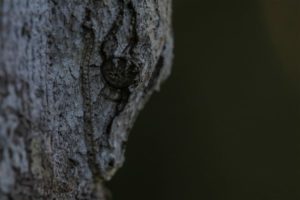
It is a nocturnal gecko, with a large head and large fingers. The eyes are golden with a vertical pupil. The back is. The skin of this species is slightly curved.
A pointed fold of skin forms a fringe under the jaw, along the lower flanks, along the edge of the legs and tail.
These fringes reduce any shading around the animal as it rests motionless on a lichen-covered branch.
I have seen two different types of coloring in this subspecies. The first perfectly imitates lichen-covered bark, including the texture.
It consists of brown, white, gray, green, steel, yellow, and red or orange, sometimes speckled with black dots. The second also mimics tree bark, this time smoother and without lichen.
The base color is usually in various
Shades of brown and complemented by a darker, textured longitudinal pattern on the back surface, reminiscent of tree bark.
In both cases, the camouflage is perfect on a well-chosen branch.
OTHER IGUANAS
Two endemic genera: Chalarodon and Oplurus.

Chalarodon madagascariensis
Habitat: Chalarodon madagascariensis is a terrestrial species commonly found on sandy soils in wooded or bushy areas in the subarid to semiarid southern and western regions of Madagascar.
The six species of Oplurus are known to inhabit trees or rocks.
Iguanids are widely distributed in America, with no current species found in Africa or Asia, and no fossil remains have ever been discovered there.
Their presence in Madagascar poses a biogeographical puzzle.
They managed to colonize this island from Antarctica before it took on a position that turned it into a hostile ice cap.

